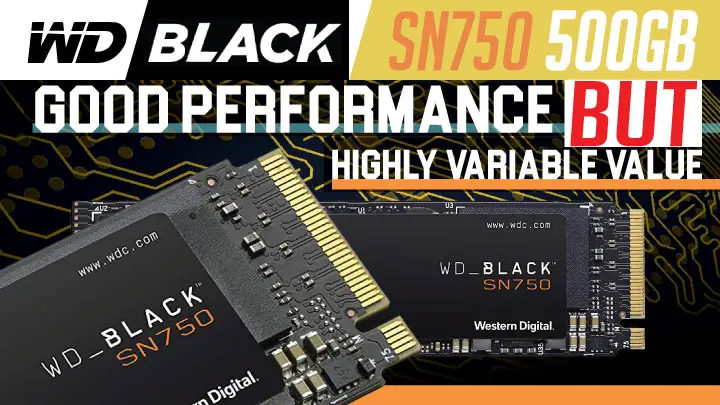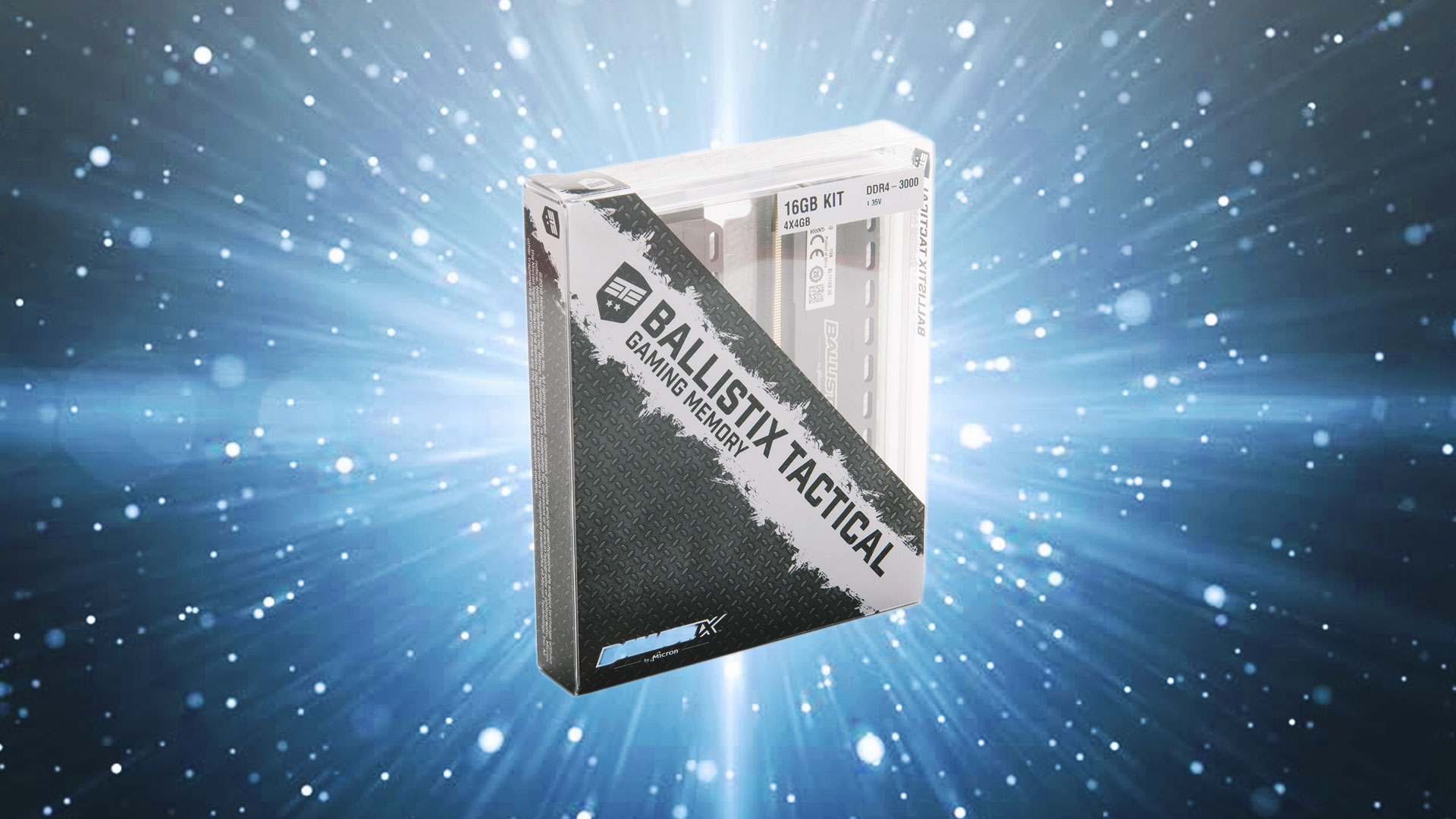Before we begin a bit of background does need to be gone over to properly understand precisely why Western Digital solid-state drives are so unique. While Western Digital are best known for their Hard Disk Drive manufacturing prowess, Western Digital did go on a bit of a buying spree back in 2016 when they finally saw the writing on the wall. Unlike Seagate who opted to purchase controller IP via their SandForce purchase, Western Digital thought in broader terms and purchased a NAND manufacture that also has experience in creating NAND based storage controllers. Namely they spent 19 Billion for SanDisk and its Intellectual Property… and existing agreements with other NAND companies like Toshiba.

This was a rather smart move as SanDisk did have a longstanding partnership with Toshiba, and helped create the BiCS NAND design. Furthermore, BiCS 3 is what makes ‘Toshiba’ TLC 3D NAND so potent. In simplistic terms BiCS 3 is based off the old-school ‘Toggle Mode’ architecture that was so very, very potent back in the ‘2D NAND’ days… and more than a match for IMFT’s 2D NAND. To be precise BiCS 3 uses the Toggle Mode 2 architecture that has a 400MT/s interface and was arguably some of the best TLC 3D NAND going. Mix in a more robust design that allows BiCS 3 TLC NAND to be more efficiently written and erased than typical TLC designs and the end result is TLC NAND that can outperform most 3D TLC NAND of the same generation (of course)… and why BiCS 4 and its 800MT/s is expected to regain lost ground against the latest and greatest IMFT and Samsung TLC 3D NAND designs.
In the meantime, its combination of good performance, with cut rate prices (as W.D. get it ‘at cost’ from their ‘in-house’ purchase orders) make this NAND extremely critical to Western Digital’s solid-state drive division’s success. It however is only half the reason Western Digital snapped up SanDisk. The other is their experience in designing NAND controllers. This is the other half of the ‘secret sauce’ that goes into creating a cutting edge NVMe SSD.
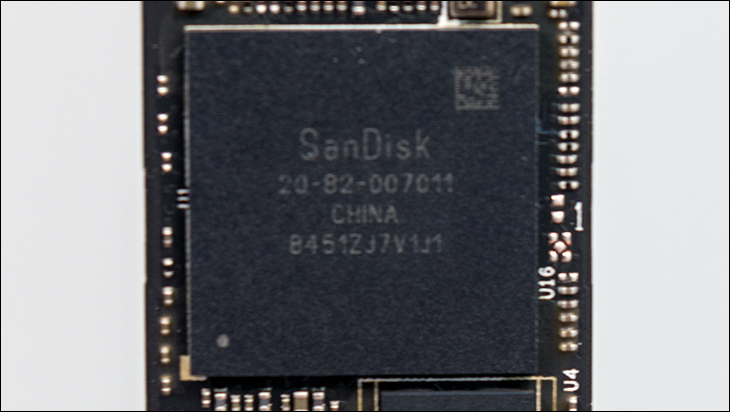
To be precise, the Western Digital SN750 makes use of the SanDisk 20-82-007011 controller. This is an eight-channel, NVMe 1.3 enabled, 3-core design that was rather ahead of its day – remember this the same controller that powered last years SN720 model. This includes using DDR4 external RAM cache instead of the (then) typical DDR3, which in turn allows it to access said buffer more efficiently and effectively with fewer wasted cycles wasted on fetching/storing data in the buffer compared to DDR3 controllers. Also like the E12, this is a controller with multiple levels of error correction – including LDCP, as well as multiple… less resource intensive recovery options, and even full multi-page XOR recovery (which is extremely cycle intensive) – that result in a higher than usual data retention abilities.
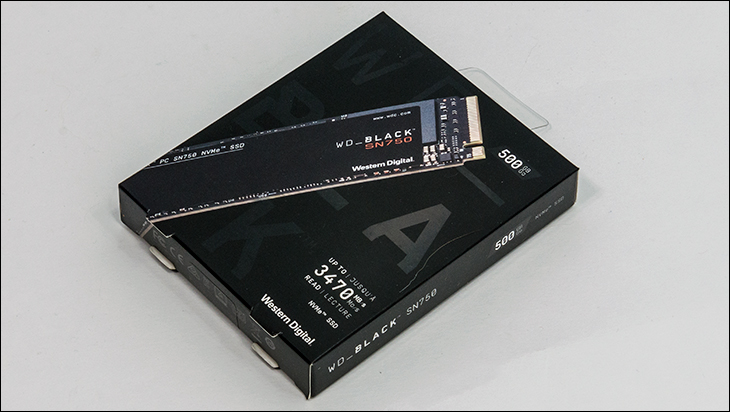
With that taken care of. The Western Digital SN750 500GB shipping container is rather striking. The combination of all black packing with white font and ‘WD BLACK’ written in the background is aggressive to say the least. This is a shipping container that is meant to grab your attention and speak directly to your inner child. Some however will find this uber-aggressiveness off putting and while the ‘Black’ moniker has always been… aggressive this shipping container may take things a tad too far.

One thing is for certain… no one will ever accuse Western Digital of taking the accessories they include with the Black SN750 series ‘too far’. About the only good thing we can say about it is that they at least include something and the solitary pamphlet is one more accessory than what Silicon Power includes. By the same token this is a bit disappointing. Sure you can download free software direct from their website but good luck ‘downloading’ a M.2 screw – which should have been included with this noticeably percent more expensive model.
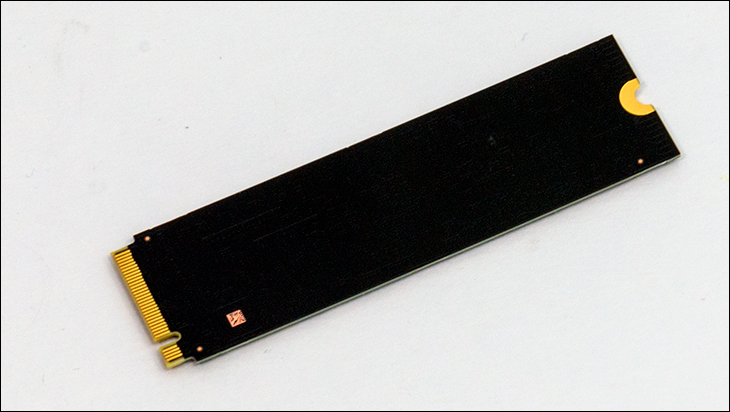
As you can see the Western Digital Black SN750 500GB is a single sided M.2 device. In fact, all SN750 models are single sided. This is both a good thing and a bad. On the positive is the fact that cooling the backside of the typical M.2 port is rather difficult, so having all the hot running components on the top where they can catch some air is a good thing. Counter balancing this is the fact that this means there is only room for two NAND ICs instead of four like on a E12 drive. Since the entire SN750 series is using SanDisk 64-Layer BiCS 3 NAND this means that this ‘500GB’ (it actually is 512GB with 12GB set aside for internal over-provisioning) drives NAND IC’s are stacked as high as the Silicon Power P34A80 1TB model. This does make them more predisposed to overheating than you would think… and only gets worse the higher the capacity gets.
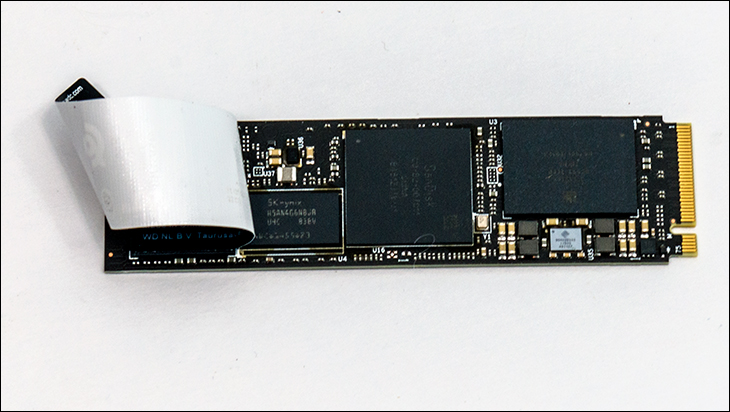
Worse still is the ‘base model’ SN750 (i.e. the version that does not come clad in a chunk of EK branded metal) does not make use of even a heat spreader. Instead the label covering the top of the PCB is simply made of paper. This is not a good thing. This is not something you expect to find on a premium model from the likes of Western Digital. Instead this is the kind of mistake you would expect to find on a drive you purchased on Alibaba and came with “joy joy” in its badly translated name!
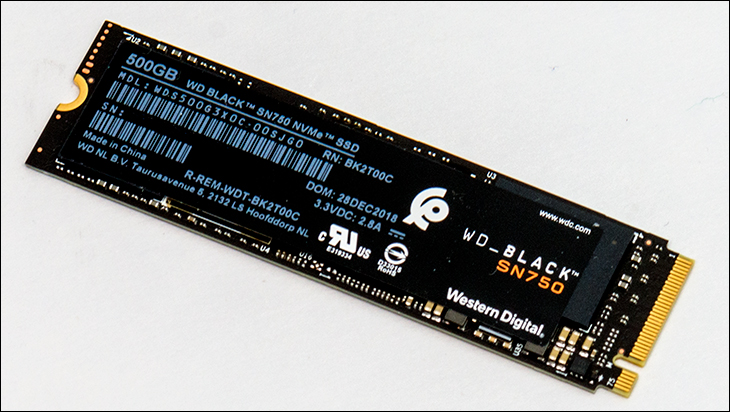
The reason they have opted for a paper only label is because the SN750 was designed around the idea of coming with a heavy heat sink attached to the top. Having a heat spreader sandwiched in-between would have resulted in a less effective design. Obviously at some point Western Digital decided to offer a ‘cheaper’ version that does not come with the heatsink. Needless to say, if you opt for the heat sink-less variant… invest in either a good after market heat sink (which can be found for about twenty dollars on amazon) or make sure your M.2 port on your motherboard is either covered with its own heatsink, is actively cooled by a fan… or preferably both… as the SN750 heat sink-less variant is going to thermally throttle.
Helping to combat this obvious issue is Western Digital did think about the layout of the various components and that is why the controller is centrally located on the PCB with a NAND IC on either side. This will result in more even cooling when actively cooled and actually does reduce latency (somewhat) as the electrical pathways to both NAND ICs are nearly the same length – which is highly unusual for a M.2 SSD to say the least. Of course, with TLC NAND latency should not be a high priority but we do have a sneaking suspicion that at some point in the future Western Digital will release an even more power variant… and this unique layout will pay true dividends. In the meantime, it is merely there to help with heat control.
Also on the positive side, these are SanDisk branded BiCS 3 TLC NAND ICs and since Western Digital owns SanDisk… they not only get them a lot cheaper they are also going to be highly binned. To put this in simplistic terms Western Digital SSD’s NAND will be of premium quality that only Intel, Crucial, Samsung, Toshiba branded drives can match… and certainly of higher grade than what Silicon Power can buy. This does not mean the P34A80’s NAND is ‘garbage’ but Silicon Power did pay more for what they could get… and yet the Western Digital SN750 is the one with a large price premium.

Rounding out the necessary components of any high-performance solid-state drive is the external RAM buffer. On the SN750 this is a single SK HYNIX 512MB DDR4-2400 CL17 RAM IC (model H5AN4G6NAFR-UHC)… which is very, very similar to what Phison E12 reference designs make use of. The only real difference is this is a 96ball FBGA chip with a 256M x 16 layout DDR4 RAM IC, whereas the P34A80’s version is a 78ball, 512Mx8 DDR4 RAM IC. Put another way its darn near the same but takes up a tad more room, but in return has a touch more surface area for cooling. Basically, this is an excellent choice, and one that Western Digital opted for before the E12 was ‘born’. We do feel it necessary to point out that the 1TB capacity version of the WD SN750 does come with 1GB worth of RAM (just like the Silicon Power P34A80 1TB). It too will only have room for one RAM IC… but it is a denser DDR4-2400 ram IC. So there is zero difference in buffer capacity and performance between the WD SN750 and the various Phison E12 models.
